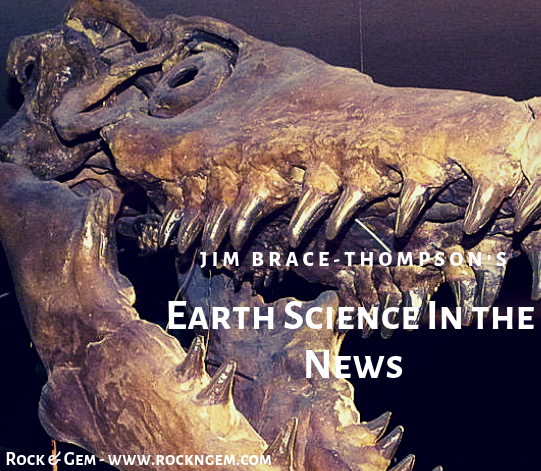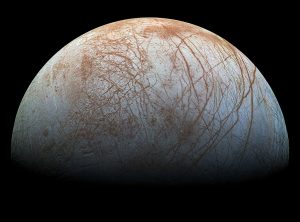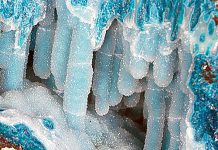
By Jim Brace-Thompson
Sea Monsters of the Early South Atlantic Revealed to the Public
When the Age of Dinosaurs began about 250 million years ago, much of the Earth’s land mass was joined together in one huge supercontinent dubbed Gondwana. But, thanks to plate tectonics, that supercontinent began to fragment and split along seams, sending pieces adrift to form the continents as we know them today.
135 million years ago, one seam split between present-day Africa and South America, creating a narrow South Atlantic seaway that quickly became populated with all manner of marine reptiles. These included mosasaurs, fierce creatures vaguely resembling alligators with flippers.
Per a recent report on NPR, an exhibit that opened November 9 at the Smithsonian Institution in Washington, DC, features mosasaurs assembled from fossils collected in the west African country of Angola thanks in part to digs conducted since 2005 by paleontologist Louis Jacobs, a professor at Southern Methodist University. His colleague and fellow collector, Michael Polcyn, began reassembling one mosasaur skeleton in Michael’s dining room until the 23-foot specimen overwhelmed his home and had to be transferred and hung from the basement of the SMU paleontology department as it was prepped for display at our national museum.
The display will extend through 2020 and admission is free.
The Mystery of a Lost Little Islet with a Very Long Name
We love our maps. They show us physical features that are immutable—until they aren’t!
Such is the case of the disappearing islet off Japan. Last surveyed in 1987 and serving as an important marker for Japanese territorial waters, Esanbehanakitakojima stood 4.6 feet above sea level. It was located some 500 meters northeast of the northern Japanese island province of Hokkaido. Today, it appears to be gone. No one knows when, how or why, but the Japanese Coast Guard has gone looking for it.
Why?
Because waters in this area also are claimed by Russia. International law mandates that a country can claim waters only if there is an island or other geological mass that rises above the sea at both low and high tide, and Japan has staked its claim to territorial waters at its northern edge on little Esanbehanakitakojima. Minus this tiny land mass, it is said Japan’s entire territorial waters here could conceivably shrink by 500 meters.
Whether eroded away by wind or waves, ground down by drifting sea ice, or overwhelmed by rising sea levels, what was once there is there no more by all accounts. And so the Japanese Coast Guard searches for a lost little islet with a very long name…
Want to Land on Europa? Watch Those Ice Spikes!

Jupiter sports many interesting moons. Both astronomers and biologists are attracted to one in particular: Europa. That’s because Europa is believed to have a salt-water ocean beneath a crust of ice. Thus, it holds the possibility of harboring life. This has made Europa a prime target for a future space mission and landing.
But hit the brakes! A recent study published in the journal Nature Geoscience suggests that the ice covering Europa’s surface may not provide for a smooth landing. Evidence suggests spikes of ice cover the surface. Some of the jagged blades tower 50 feet high. If there’s life beneath that ice, Europa is defending it with quite an arsenal!
Author: Jim Brace-Thompson
 Founder and overseer of the AFMS Badge Program for kids.
Founder and overseer of the AFMS Badge Program for kids.
He’s also an inductee of the National Rockhound & Lapidary Hall of Fame within the Education Category.















